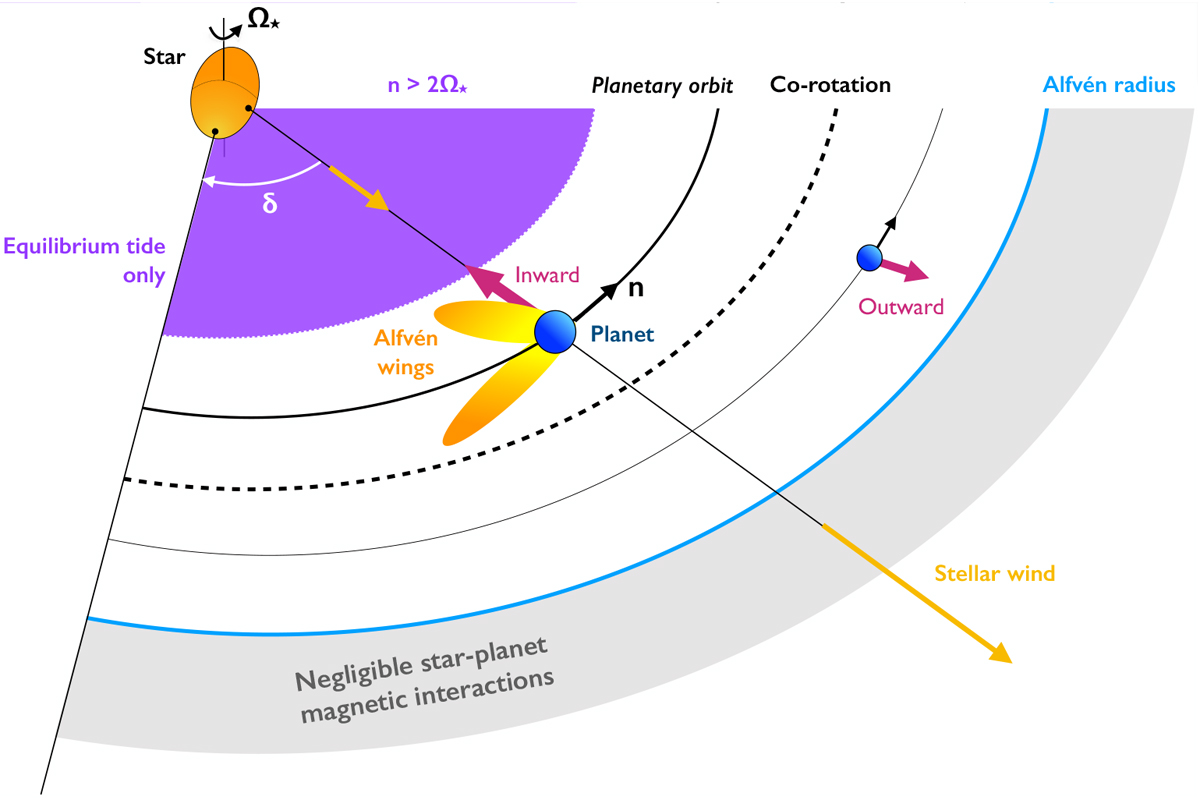Fig. 1

Sketch of the main features and locations of interest involved in a star–planet system undergoing tidal and magnetic interactions. The planet (in blue) orbits the star (in orange) with an orbital angular velocity n. As a result of the presence of a planet, the star presents a bulge misaligned with the line joining the centers of the two celestial bodies, which induces a lag angle δ. This angle has been greatly exaggerated here for visualization purposes (it is indeed much smaller than 1 degree in almost all cases). If the planetary mean motion is greater than twice the stellar rotation rate, inertial waves cannot be excited in the stellar convective zone and no dynamical tide is raised within the convective envelope of the star (see the purple area). The relative motion between the planet and the ambient wind (represented with orange arrows) leads to the formation of Alfvén wings (orange lobes around the planet) if the planet is below the Alfvén radius (in blue). Beyond thisdistance, no Alfvén wings can connect the star and the planet (see the gray area). For both tidal and magnetic interactions, a planet situated below the co-rotation radius (see the black dashed line) undergoes an inward migration, and a planet situated beyond this distance migrates outwards. The relative position of the different orbits of interest mayvary depending on the initial configuration of the system considered.
Current usage metrics show cumulative count of Article Views (full-text article views including HTML views, PDF and ePub downloads, according to the available data) and Abstracts Views on Vision4Press platform.
Data correspond to usage on the plateform after 2015. The current usage metrics is available 48-96 hours after online publication and is updated daily on week days.
Initial download of the metrics may take a while.


